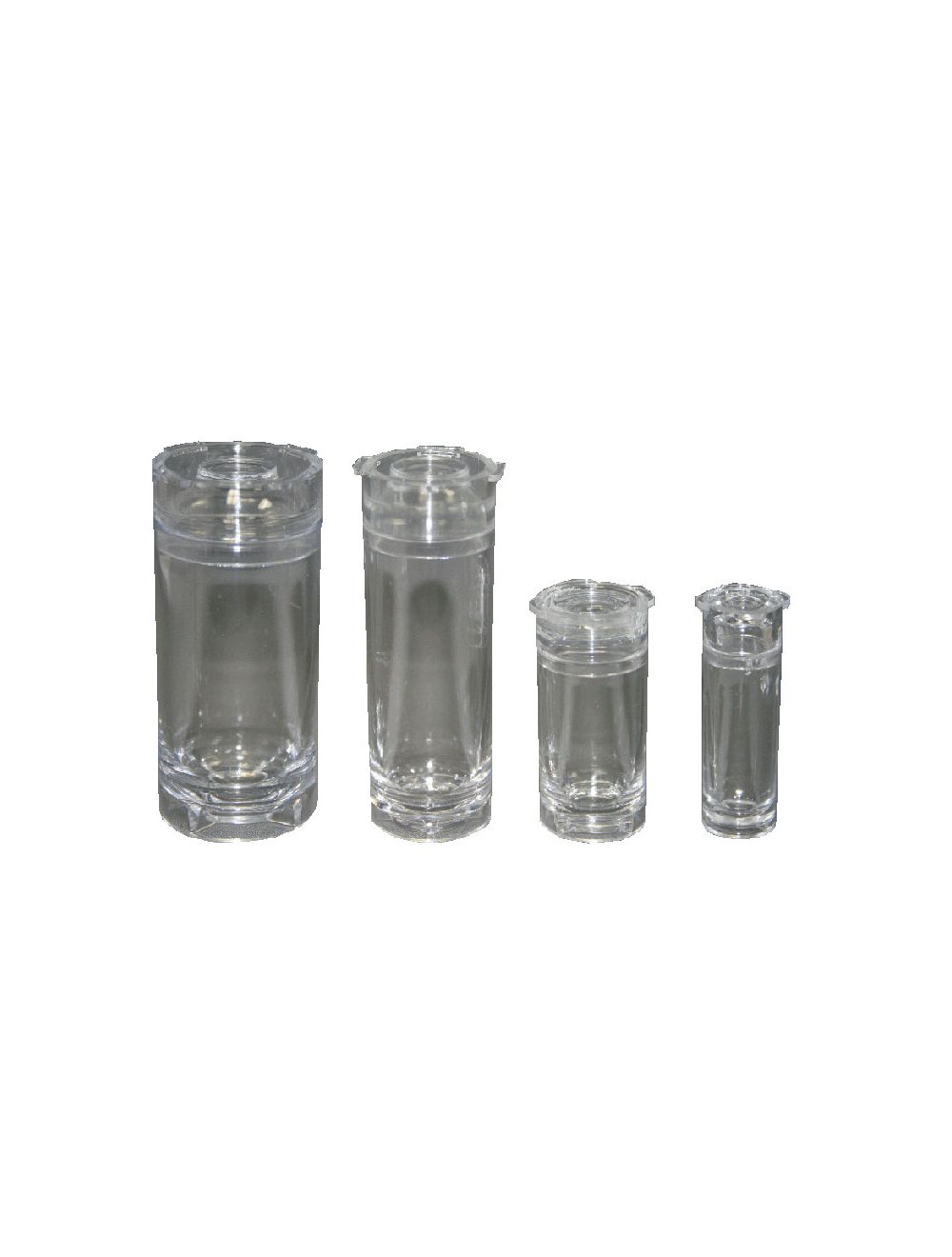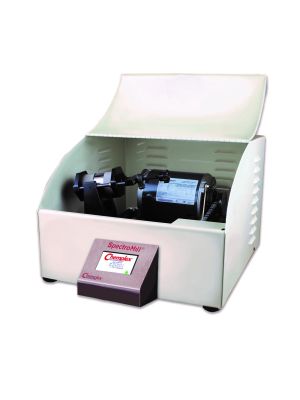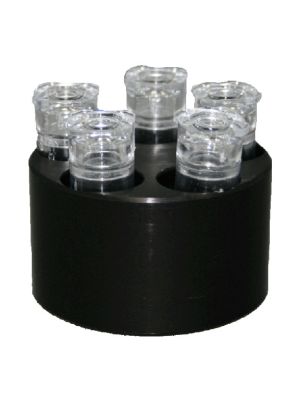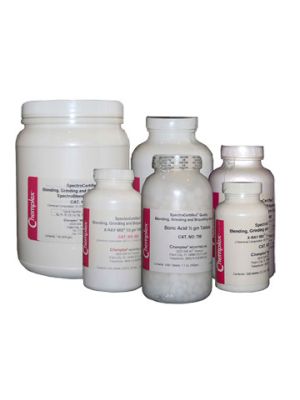SpectroVial® Ball Pestles for Grinding and Blending Samples
Chemplex® SpectroVials® are all made in a variety of materials all with rounded interiors to achieve consistent grinding results.
• For use with all SpectroMill® grinders
• Rounded interior end caps avert particle “caking” effects resulting in uniform grinding
• Polystyrene, annealed Stainless Steel, Titanium Carbide, Tungsten Carbide, Agate and Sapphire
• Assorted volumetric capacities
Item Quantity Discount:
Order a unique item quantity of 20-39 packages of Polystyrene SpectroVial® Comminution Vials, and receive $5.00 off the standard price per package.
Order a unique item quantity of 40 or more packages of Polystyrene SpectroVial® Comminution Vials, and receive $10.00 off the standard price per package.
Chemplex® offers a wide selection of SpectroVial® grinding/blending vials for use with its SpectroMill® Ball Pestle Impact Grinders. All SpectroVial®grinding and blending vials are uniquely designed with concaved interior ends in both the body and cap that are also fabricated from the same material. The importance of concaved interior ends is to ensure that no sample particles can elude the ball pestle comminution process by entrapment and caking in the corners similar to the expected events with the use of traditional flat-bottom vials.
SpectroVial® Grinding/Blending vials are available in a variety of sizes and material substances to accommodate a wide variety of sample materials. Corresponding ball pestles are also available and offered in compatible materials to the vials.
Polystyrene SpectroVials®
SlipFit® vials are used for general purpose comminuting and blending moderately hard samples. They also have the added convenience of easily slipping the caps onto the vial bodies. They are fabricated from a rust-resistant stainless steel for cleansing with water and easy cleanups. Interior ends of both caps and vial bodies are concaved. Stainless steel ball pestles suggested.
Titanium carbide and Tungsten Carbide are an exceptionally hard substance having similar Rockwell "C" hardness that makes them very suitable to process very hard sample materials. Titanium carbide is prone to fracture and is supplied without any warranty expressed or implied. Tungsten carbide ball pestles suggested.
Agate lined SpectroVials® are the perfect addition to any laboratory in which hard samples are ground but cannot have any wear metals fromt the grinding vessels. Agate has a hardness of 7 on the Mohs scale.
Sapphire lined SpectroVials® are the perfect addition to any laboratory in which extremely hard samples are ground but cannot have any wear metals fromt the grinding vessels. Sapphire has a hardness of 9 on the Mohs scale.
Notes: Here are some of the dimensional definitions in the SpectroVial® Table
Outside Dia: The overall diameter of the outside of the SpectroVial®
Length: The overall length of the SpectroVial®
Vol: The maximum inside volume of the SpectroVial® it is recommended not to exceed 50% of the Vol.
Diameter = the inside diameter of the SpectroVial®. It is recommended not to use particle sizes greater than 50% of this Diameter.
Chemplex® offers a wide selection of SpectroVial® comminution and blending vials for use with its SpectroMill® Ball Pestle Impact Grinders. They are available in a variety of sizes and material substances to accommodate a wide variety of sample materials. All SpectroVial® grinding and blending vials are uniquely designed with concaved interior ends in both the body and cap that are also fabricated from the same material. Corresponding ball pestles are also available and offered in compatible materials to the vials. The importance of concaved interior ends is to ensure that no sample particles can elude the ball pestle comminution process by entrapment and caking in the corners similar to the expected events with the use of traditional "medicine" vials. The mechanics of the SpectroMill® Ball Pestle Impact Grinders are designed to propel one or more ball pestles though a "figure-8" path of travel for impact against the curved interior ends of the vials. The spherical shape of the balls is responsible for sample "mulling" against the curvature of the interior vial ends. The combination of ball pestle impacts and mulling actions effectively comminute the sample substance for uniformity of particle size, configuration and distribution producing a thoroughly homogeneous mixture. |
| No |








